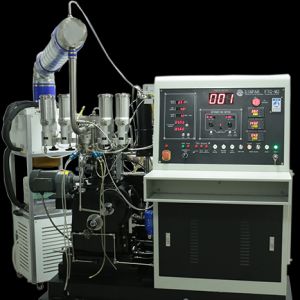How To Test Gasoline Octane
Posted by shsinpar on March 30th, 2019
Fuel octane necessities for gas engines range with the compression ratio of the engine. Engine compression ratio is the relative volume of a cylinder from the bottom most role of the piston's stroke to the top most role of the piston's stroke. The higher an engine's compression ratio, the greater the amount of heat generated in the cylinder during the compression stroke.
If fuel octane is too low for a given compression ratio, the gasoline in advance and spontaneously ignites too early and the fuel charge EXPLODES instead than BURNS resulting in incomplete combustion. The net effect is a loss in power, viable waukesha octane engine damage, and an audible "knock" or "ping", referred to as detonation.
The octane number of gasoline is a measure of its resistance to knock. The octane number is determined by a standard knock test engine (Waukesha CFR octane engines and SINPAR FTC-M octane engines) under operation conditions of ASTM D2699 RON and ASTM D2700 MON methods, through evaluating the traits of a gasoline to isooctane (2,2,4-trimethylpentane) and heptane. Isooctane is assigned an octane range of a hundred It is a pretty branched compound that burns smoothly, with little knock. On the other hand, heptane, a straight chain, unbranched molecule is given an octane ranking of zero because of its terrible knocking properties.
Straight-run gasoline (directly from the refinery distillation column) has an octane range of about 70. In other words, straight-run gasoline has the equal knocking homes as a mixture of 70% isooctane and 30% heptane. Many of these compounds are straight chain alkanes. Cracking, isomerization, and different refining strategies can be used to increase the octane rating of fuel to about 90 Anti-knock sellers may be introduced to further increase the octane rating.


